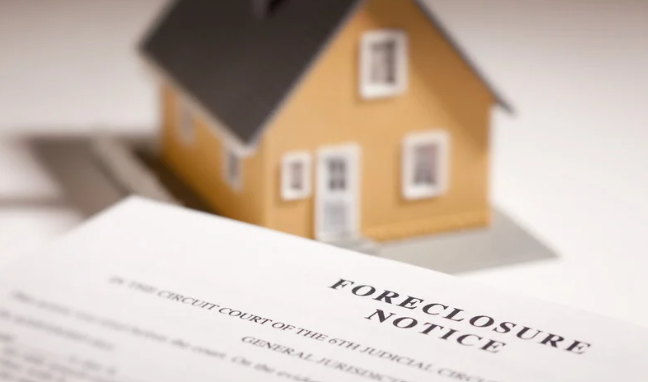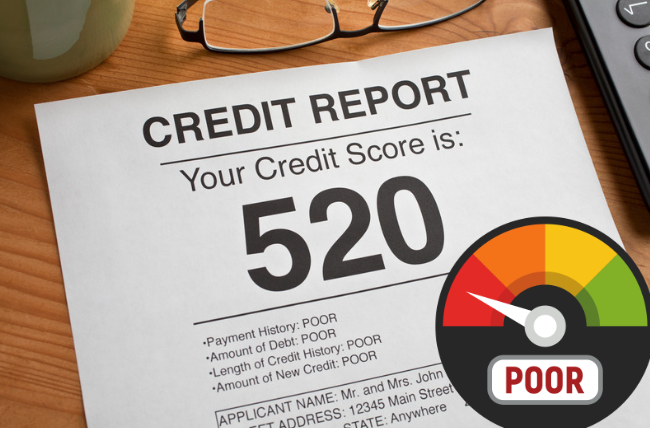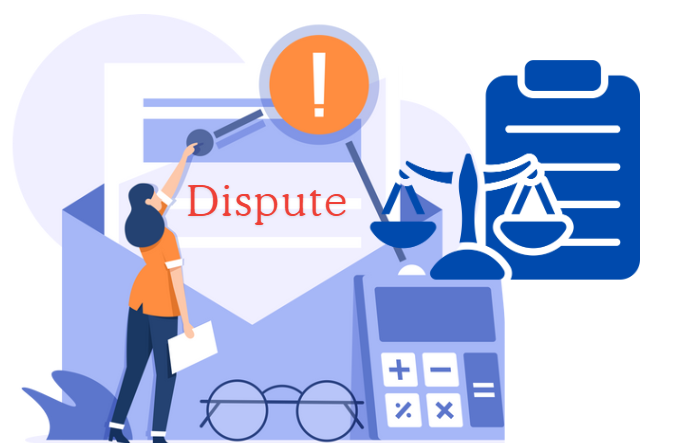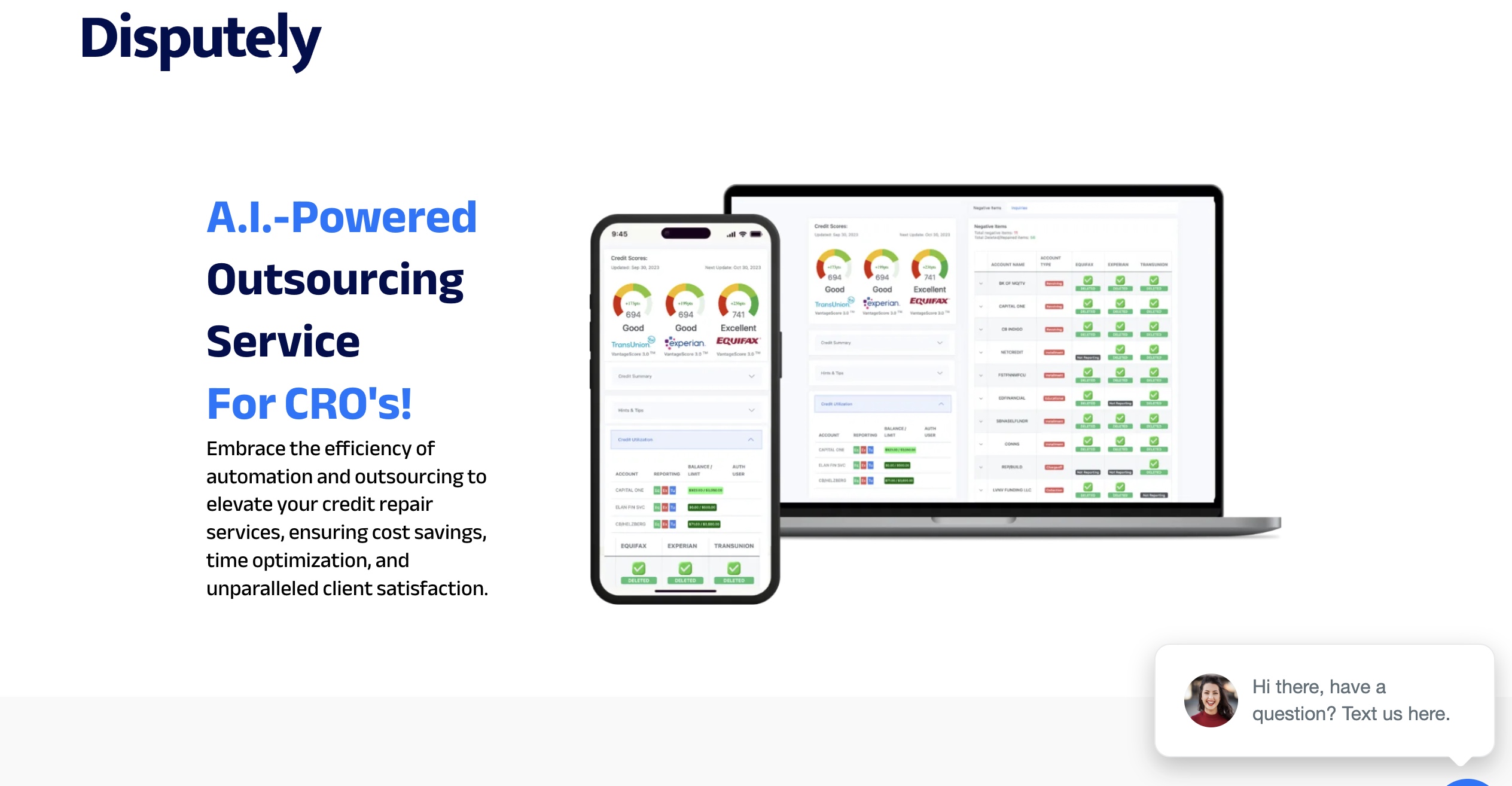
The Fastest Way to Repair Credit When You Have 2-3 Negative Items
Repairing credit when you have negative items on your report can be challenging. However, it is an achievable goal.
How?
Tackling personal finance over the years, I’ve seen all kinds of credit issues. In fact, I've helped many people turn their situations around.
This guide will walk you through actionable steps, learning about:
Understanding Negative Items on Your Credit Report
What Are Negative Items?
How to Repair Credit When You Have 2-3 Negative Items
Additional Tips for Rapid Credit Repair
How Credit Repair Software Can Help Remove Negative Items
Also, we’ll share practical advice to help you improve your credit score as quickly as possible.

Understanding Negative Items on Your Credit Report
Did you know that even just a couple of negative marks on your credit report can significantly lower your score? But don't worry—we have the power of automated credit repair software. Plus, there are effective ways to address these issues and improve your credit.
To effectively repair your credit, it’s crucial to understand what derogatory items are and why they impact your credit score so significantly.
What Are Negative Items?
Negative items are records on your credit report that indicate you have not managed your credit responsibly. These items can include:
Late Payments: Payments that are made past the due date. According to Experian, even a single late payment can stay on your credit report for up to seven years.
Collections: Unpaid debts that a creditor has handed over to a collection agency. Collections can arise from various types of debt, including medical bills, credit card debts, and utility bills.
Charge-Offs: When a creditor writes off your debt as a loss because you have not paid it for a prolonged period, typically 180 days. The creditor may then sell this debt to a collection agency.
Bankruptcies: Legal proceedings that involve a person or business that is unable to repay outstanding debts. Bankruptcies can remain on your credit report for 7-10 years, depending on the type.
Foreclosures: Occurs when a homeowner cannot make full principal and interest payments on their mortgage, leading the lender to seize the property.

Repossessions: Happens when a lender takes back property (usually a car) because the borrower failed to make payments.
Why Are They Called Negative Items?
These items are termed "negative" because they indicate a history of financial mismanagement, which can signal to lenders that you are a higher risk. This perception can lead to several adverse outcomes, including:
Lower Credit Scores: Negative items can significantly reduce your credit score, making it harder to obtain new credit at favorable terms.
Higher Interest Rates: Even if you are approved for credit, you might be offered higher interest rates due to the perceived risk associated with your credit history.
Credit Denials: In some cases, having negative items on your credit report can result in outright denials for loans, credit cards, or other forms of credit.
Impact on Employment: Some employers check credit reports as part of their hiring process, and negative items could affect your job prospects.
Understanding these aspects of negative items should be a priority toward taking control of your credit repair journey.
So, what’s next? Of course, we’ll have to fix it.
Read on to learn how.

How to Repair Credit When You Have 2-3 Negative Items
Step 1: Obtain and Review Your Credit Report
The first step in repairing your credit is to obtain a copy of your credit report from the three major credit bureaus: Equifax, Experian, and TransUnion. You are entitled to one free report from each bureau every 12 months through AnnualCreditReport.com.
Tips for Reviewing Your Credit Report:
Check for Errors: Look for any inaccuracies in your personal information, account details, and balances.
Identify Negative Items: Clearly identify the negative items impacting your credit score.
Verify Account Status: Ensure that accounts marked as paid are indeed marked as such on your report.
Step 2: Dispute Inaccurate Information

If you find any inaccuracies on your credit report, you have the right to dispute them. This can be one of the quickest ways to improve your credit score if the disputes are resolved in your favor.
How to Dispute Inaccurate Information:
Gather Evidence: Collect any documents that support your claim (e.g., payment receipts, statements).
Submit a Dispute: You can file disputes online, by phone, or by mail with each credit bureau. Include copies of your supporting documents.
Follow Up: Monitor the progress of your dispute. The credit bureaus have 30 days to investigate and respond.
Step 3: Pay Down Outstanding Debts

Paying down outstanding debts, especially those in collections, can significantly improve your credit score. Start by prioritizing debts based on their impact on your score and your financial ability to pay them off.
Strategies for Paying Down Debts:
Negotiating Settlements: Sometimes collection agencies are willing to settle for less than the full amount owed. Negotiating a settlement can help you pay off debts faster.
Paying in Full: If possible, paying the full amount owed can be the best approach as it demonstrates your ability to repay debts.
Setting Up Payment Plans: If you can't pay the debt in full, setting up a payment plan can help manage the debt over time.
Step 4: Establish Positive Credit Habits
While addressing negative items is crucial, establishing positive credit habits can help build a stronger credit profile over time.
Positive Credit Habits to Adopt:
Timely Payments: Always pay at least the minimum amount due on your credit accounts by the due date. Late payments can significantly impact your credit score.
Credit Utilization: Aim to use less than 30% of your available credit limit on revolving accounts, such as credit cards. Lowering your credit utilization ratio can quickly boost your score.
Regular Monitoring: Keep an eye on your credit report regularly to ensure accuracy and to track your progress.
Step 5: Consider Becoming an Authorized User
If you have a trusted family member or friend with good credit, you might consider becoming an authorized user on their credit card. This can help improve your credit score by benefiting from their positive credit history.
Benefits of Becoming an Authorized User:
Immediate Boost: Being added as an authorized user can quickly improve your credit score if the primary cardholder has a good payment history and low credit utilization.
No Direct Responsibility: You won’t be directly responsible for the debt on the account, although any negative activity can also affect your credit.
Step 6: Explore Credit Building Tools
There are several tools and products specifically designed to help build or rebuild credit.
Credit Building Tools:
Secured Credit Cards: These cards require a security deposit, which serves as your credit limit. Using a secured credit card responsibly can help rebuild your credit.
Credit Builder Loans: These are small loans specifically designed to help build credit. The loan amount is held in a bank account while you make payments, and once paid off, you receive the funds.
Retail Store Cards: These cards are often easier to obtain than traditional credit cards and can be a stepping stone to building credit.
Step 7: Deal with Collections
If you have collections on your credit report, addressing them promptly can improve your credit score.
Handling Collections:
Request Validation: Before paying a collection, request that the collection agency validate the debt. They must prove that the debt is yours and that they have the right to collect it.
Negotiate Pay-for-Delete: In some cases, you can negotiate with the collection agency to remove the collection from your credit report in exchange for payment.
Settle Debts: If you can't pay the full amount, negotiate a settlement. Ensure you get the agreement in writing before making any payments.
Step 8: Address Late Payments
Late payments can have a significant negative impact on your credit score. Addressing them can help improve your score.
Addressing Late Payments:
Request Goodwill Adjustments: If you have a history of on-time payments but have recently missed one, you can request a goodwill adjustment from your creditor. This is where the creditor removes the late payment from your credit report as a gesture of goodwill.
Set Up Automatic Payments: To avoid future late payments, set up automatic payments for at least the minimum amount due.
Step 9: Limit Credit Inquiries
Every time you apply for credit, a hard inquiry is recorded on your credit report. Too many inquiries can negatively impact your score.
Managing Credit Inquiries:
Limit Applications: Only apply for credit when necessary. Multiple applications in a short period can lower your score.
Pre-Qualification: Before applying for new credit, check if the lender offers pre-qualification, which only results in a soft inquiry and doesn’t affect your credit score.
Step 10: Keep Old Accounts Open
The length of your credit history plays a significant role in your credit score. Keeping older accounts open can help maintain a longer credit history.
Benefits of Keeping Old Accounts Open:
Age of Credit: The longer your credit history, the better it is for your credit score.
Credit Utilization: Keeping accounts open can help maintain a lower overall credit utilization ratio.
Additional Tips for Rapid Credit Repair
Here are some additional tips to help you repair your credit as quickly as possible:
Professional Help: If the process seems complicated, consider seeking professional help. Using credit repair software for professionals can assist you with disputing inaccuracies and negotiating with creditors.
Debt Consolidation: If you have multiple debts, consolidating them into a single loan with a lower interest rate can make payments more manageable and improve your credit utilization ratio.
Financial Education: Educate yourself about personal finance and credit management. Understanding how credit works can help you make better financial decisions.
Emergency Fund: Establish an emergency fund to avoid falling behind on payments in the future. Having a financial cushion can prevent new negative items from appearing on your credit report.
Patience and Persistence: Repairing your credit takes time and persistence. Stay focused on your goal, and don’t get discouraged by slow progress.

How Credit Repair Software Can Help Remove Negative Items
Incorporating credit repair software into your strategy can significantly streamline the process of identifying and disputing negative items on your credit report.
Using a credit repair business software and dispute outsourcing make the often complex and time-consuming task of credit repair more manageable and efficient.
Credit Repair Software
Credit repair software is a digital tool that helps individuals manage and improve their credit scores. These programs offer a range of features that can assist in tracking, disputing, and monitoring credit reports. They are especially useful for those who may find the traditional methods of credit repair overwhelming or too time-consuming.
Key Features of Credit Repair Software
Credit repair software which are known as artificial intelligence credit repair includes various features. This makes the credit repair process more accessible and effective:
Credit Report Analysis: The software can import your credit report from the major credit bureaus (Equifax, Experian, and TransUnion) and analyze it for negative items that may be impacting your score.
Dispute Automation: Many programs offer an AI credit dispute, allowing you to quickly create and send dispute letters to creditors and credit bureaus.
Tracking and Monitoring: These tools often include features for tracking the progress of your disputes and monitoring changes to your credit report.
Educational Resources: Many credit repair software solutions provide educational resources to help you understand the credit repair process and improve your financial literacy.
How Credit Repair Software Can Streamline the Dispute Process

One of the most significant benefits of using credit repair software is the ability to automate and streamline the dispute process. Here’s how it can help:
Identifying Inaccuracies: Credit repair software can quickly scan your credit report for inaccuracies, such as incorrect balances, wrong payment dates, or accounts that do not belong to you. This automated process saves time compared to manually reviewing each item on your report.
Generating Dispute Letters: Once inaccuracies are identified, the software can generate dispute letters tailored to each specific error. These letters are often pre-formatted to meet the requirements of the credit bureaus, ensuring that your disputes are clear and professional.
Automating Follow-Ups: Effective credit repair often requires multiple rounds of disputes and follow-ups. Credit repair software can automate this process by scheduling and sending follow-up letters if the initial dispute does not result in the desired outcome.
Record Keeping: Keeping track of all correspondence and responses from credit bureaus and creditors is crucial. Credit repair software provides a centralized location to store all records, making it easy to track the progress of each dispute and ensuring that you have documentation if further action is needed.
Benefits of Using Credit Repair Software
Using credit repair software offers several benefits that can accelerate the credit repair process:
Time Efficiency: The automation of dispute generation and follow-ups significantly reduces the time required to manage the credit repair process.
Accuracy: Automated tools help ensure that all necessary information is included in your disputes, reducing the risk of errors that could delay the process.
Convenience: Having all your credit repair activities in one place simplifies the process, making it easier to manage multiple disputes simultaneously.
Education: Many credit repair software solutions include educational resources that can help you better understand credit scoring and how to maintain a healthy credit profile.
Choosing the Right Credit Repair Software
Not all credit repair software is created equal, so it’s important to choose a tool that best suits your needs. Here are some factors to consider when selecting credit repair software:
Features: Look for software that offers comprehensive features, including credit report analysis, dispute automation, and progress tracking.
Ease of Use: Choose a user-friendly program that makes it easy to navigate and manage your credit repair activities.
Customer Support: Good customer support is crucial, especially if you are new to credit repair. Ensure that the software provider offers reliable customer support to help you with any issues.
Cost: Consider the cost of the software and whether it fits within your budget. Some programs offer free trials or tiered pricing plans to accommodate different needs.
Reviews and Reputation: Research user reviews and the software’s reputation to ensure that you are choosing a reliable and effective tool.
Integrating Credit Repair Software into Your Strategy
To maximize the benefits of credit repair software, integrate it into your broader credit repair strategy. Here’s how:
Combine with Manual Efforts: While software can automate many aspects of credit repair, it’s still important to stay actively involved in the process. Review the disputes generated by the software and customize them as needed.
Educate Yourself: Use the educational resources provided by the software to deepen your understanding of credit repair and financial management.
Monitor Progress: Regularly check the progress of your disputes and make adjustments as necessary. Use the tracking features of the software to stay on top of deadlines and follow-ups.
Stay Organized: Keep all records organized within the software to ensure that you have a clear history of your credit repair efforts.
Credit repair software can be a powerful ally in your journey to improve your credit score.
By automating and streamlining the dispute process, these tools can help you address negative items on your credit report more efficiently and effectively.
When used in conjunction with manual efforts and a solid understanding of credit repair principles, credit repair software can significantly enhance your ability to achieve a better credit score.
Conclusion
Repairing your credit with 2-3 negative items requires understanding your credit report. You also need to address negative items and establish positive credit habits.
By following the steps outlined in this guide, you can work towards improving your credit score as quickly as possible.
Ready to take control of your credit?
Disputely AI can help! Our advanced technology simplifies the process of disputing negative items on your credit report. With personalized strategies and expert guidance, Disputely AI makes credit repair easier and more effective. Start your journey to better credit today with Disputely AI, contact us now for sa free DEMO.
